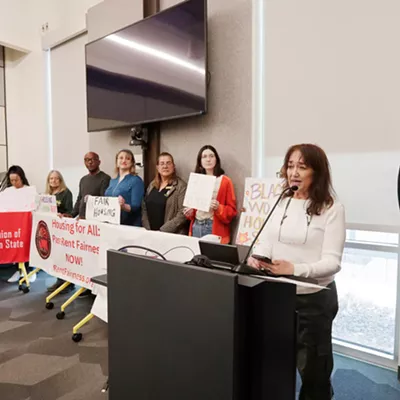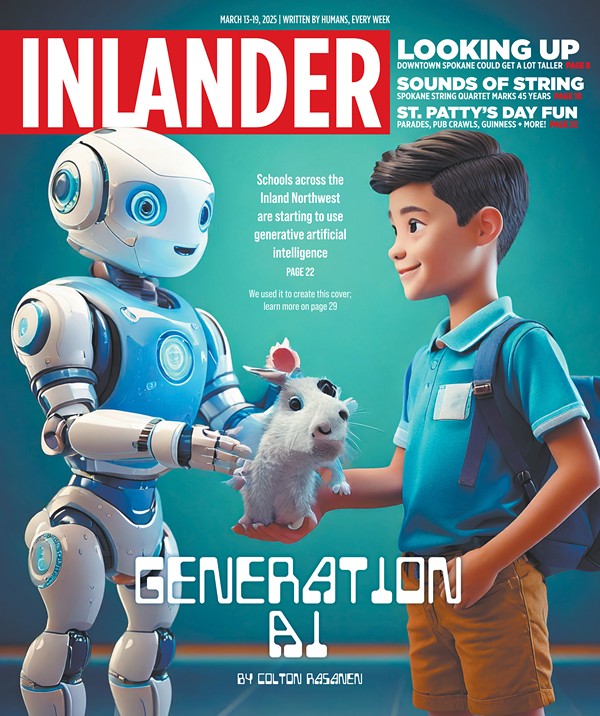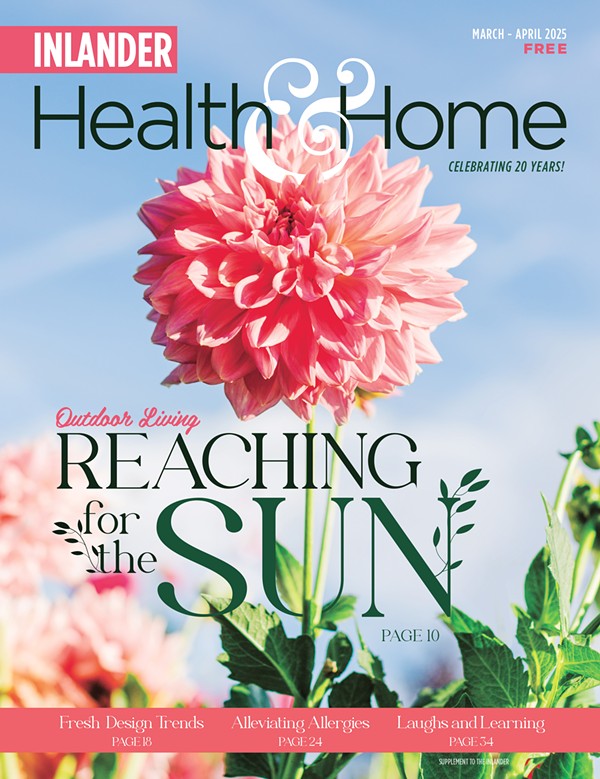Book Review
[
{
"name": "Broadstreet - Instory",
"component": "25846487",
"insertPoint": "4",
"requiredCountToDisplay": "4"
},{
"name": "Broadstreet - Empower Local",
"component": "27852456",
"insertPoint": "8",
"requiredCountToDisplay": "8"
},{
"name": "Broadstreet - Instory",
"component": "25846487",
"insertPoint": "12",
"requiredCountToDisplay": "12"
},{
"name": "Broadstreet - Instory - 728x90 / 970x250",
"component": "27852677",
"insertPoint": "18",
"requiredCountToDisplay": "18"
},{
"name": "Broadstreet - Instory",
"component": "25846487",
"insertPoint": "5th",
"startingPoint": "23",
"requiredCountToDisplay": "24",
"maxInsertions": 100
}
]
by Paul Lindholdt
The cover of the paperback edition of this book is a kick. As if in birthday glee, a grinning gal in short-sleeve plaid covers her eyes with her hands. Her woozy thought-bubble -- the emblem of nuclear science, an atom with electrons swirling -- frames the Day-Glo letters of the title. A sheaf of wheat bristles in the foreground, corn leaves sprouting from it, as if some genetic accident had tainted the family crop.
That's how the world is coming to view the nearby bioregion called the Palouse, an area of high, rolling hills where dryland farming dominates the horizons. Just south of the Palouse, beginning in 1944, the Hanford Nuclear Reservation processed plutonium into the bombs dropped on Japan. Only now are we coming to learn how many clouds of radioactive trash the U.S. government released in the decades following World War II. Those clouds settled, willy-nilly, north and east.
This is a book about the "downwinders," a term referring to all those folks who lived in areas where the prevailing winds deposited radiation. Teri Hein read from the new edition of the book at Auntie's last summer, and when audience members challenged her, she was quick to disclaim any specialized knowledge about the nuclear industry.
Instead she trains a writer's eye on human interests and analogies. The waste product called iodine-131 is a kind of "nuclear exhaust allowed to escape out the back of a nuclear plant, presumably in the name of powering forward."
Hein says the book was conceived in a two-week creative writing workshop taught by Terry Tempest Williams, whose Refuge shares this book's tender affection for family and harsh skepticism regarding nuclear tests. But Hein's tone is more slippery than Williams'. "As far as we are concerned," she writes, toeing a line of wry complacency, "civilization as we know it today, including everything from Mesopotamia to the landing on the moon, we can trace back to wheat."
In the three years since it was first released, this book has changed in more than just the cover. Mariner Books, an imprint of Houghton Mifflin, bought the rights and promoted it with a new jacket, subtitle, preface and epilogue. These tease out an edgy aspect that the first edition hid beneath its glib reverence for farm families who had been slammed by the high incidence of cancer, leukemia, stroke and thyroid disease in children and adults.
It's hard to justify beautiful writing on behalf of a gruesome cause. Hein doesn't try; she just tells it like it is. One hope remains, though: The courts might yet rule in favor of the dozens of plaintiffs whose lives and livelihoods are hanging in the balance.
Publication date: 12/04/03
The cover of the paperback edition of this book is a kick. As if in birthday glee, a grinning gal in short-sleeve plaid covers her eyes with her hands. Her woozy thought-bubble -- the emblem of nuclear science, an atom with electrons swirling -- frames the Day-Glo letters of the title. A sheaf of wheat bristles in the foreground, corn leaves sprouting from it, as if some genetic accident had tainted the family crop.
That's how the world is coming to view the nearby bioregion called the Palouse, an area of high, rolling hills where dryland farming dominates the horizons. Just south of the Palouse, beginning in 1944, the Hanford Nuclear Reservation processed plutonium into the bombs dropped on Japan. Only now are we coming to learn how many clouds of radioactive trash the U.S. government released in the decades following World War II. Those clouds settled, willy-nilly, north and east.
This is a book about the "downwinders," a term referring to all those folks who lived in areas where the prevailing winds deposited radiation. Teri Hein read from the new edition of the book at Auntie's last summer, and when audience members challenged her, she was quick to disclaim any specialized knowledge about the nuclear industry.
Instead she trains a writer's eye on human interests and analogies. The waste product called iodine-131 is a kind of "nuclear exhaust allowed to escape out the back of a nuclear plant, presumably in the name of powering forward."
Hein says the book was conceived in a two-week creative writing workshop taught by Terry Tempest Williams, whose Refuge shares this book's tender affection for family and harsh skepticism regarding nuclear tests. But Hein's tone is more slippery than Williams'. "As far as we are concerned," she writes, toeing a line of wry complacency, "civilization as we know it today, including everything from Mesopotamia to the landing on the moon, we can trace back to wheat."
In the three years since it was first released, this book has changed in more than just the cover. Mariner Books, an imprint of Houghton Mifflin, bought the rights and promoted it with a new jacket, subtitle, preface and epilogue. These tease out an edgy aspect that the first edition hid beneath its glib reverence for farm families who had been slammed by the high incidence of cancer, leukemia, stroke and thyroid disease in children and adults.
It's hard to justify beautiful writing on behalf of a gruesome cause. Hein doesn't try; she just tells it like it is. One hope remains, though: The courts might yet rule in favor of the dozens of plaintiffs whose lives and livelihoods are hanging in the balance.
Publication date: 12/04/03

















